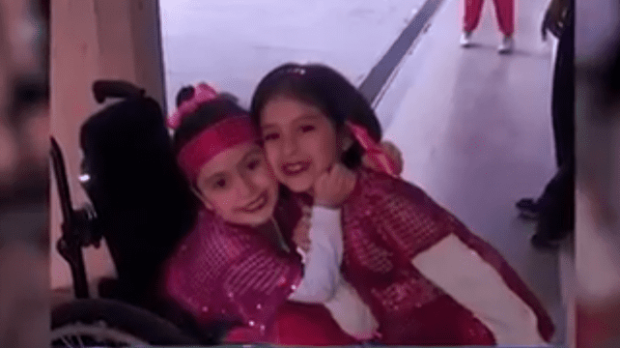Teaching isn’t just a job; it’s a vocation. It’s beautiful to see an educator who cares for his students — especially the most challenged — as if they were his own children.
Lucas Mariano Salas Adi is a physical education teacher at Our Lady of Mount Carmel and Saint Joseph School in San Fernando del Valle de Catamarca, in Argentina. For the annual celebration in memory of José de San Martín, one of the founding fathers of Argentina, the teacher created a dance that all his young students, including one with a disability, could participate in and enjoy.
[protected-iframe id=”e753d38ae0e1edb83eed651be4695bfe-95521100-125259731″ info=”https://www.facebook.com/plugins/video.php?href=https%3A%2F%2Fwww.facebook.com%2Fmartincito.vizgarra%2Fvideos%2F1652729304746754%2F&show_text=0&width=560″ width=”560″ height=”308″ frameborder=”0″ style=”border:none;overflow:hidden” scrolling=”no”]
In order to make this happen, after getting his disabled student’s parents’ permission, he used a custom-made harness to strap the girl’s legs to his own, allowing her to dance with him. The two danced, jumped, and spun around together with all the other students in the class. It was a moving and life-affirming joy to witness!
In the video, with the boys dressed in blue and the girls in pink (very old-fashioned!), some of the children lose their rhythm and fall a step or two behind, but they keep going with all their enthusiasm. At the front of the group is the teacher and the little girl. She keeps the time with her arm gestures, remembering all the right movements, while the music crescendos and the students’ parents clap along with the dancing.

Read more:
What disabled children bring to the world of fashion and sports
“I’m very proud of you,” wrote Martin Damian Vizgarra, a friend of the teacher, who shared the video on Facebook. We are really proud of you too, Mr. Salas, and of all the teachers throughout the world who put their hearts into their work, going above and beyond to educate our children. May your example of love and dedication inspire your students to continue to build a culture that welcomes and embraces every human life!
This article was originally published in the Italian edition of Aleteia, and has been translated and/or adapted here for English-speaking readers.

